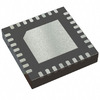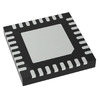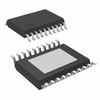Exploring Real-Time Operating Systems (RTOS): Concepts, Features, and Applications
This guide explores Real-Time Operating Systems (RTOS), which are used for applications where timing is key. It explains the differences between hard and soft time systems and their impact in various fields. By understanding how these systems work and manage tasks, we can create technology that performs reliably under tight deadlines. This guide combines technical details with applications, giving you a clear and practical understanding of RTOS.Catalog

Definition
A real-time operating system (RTOS) is designed to ensure that tasks are executed within strict time constraints for applications where timing is important. RTOS can be divided into two main categories: hard real-time systems and soft real-time systems. Hard real-time systems demand strict adherence to timing deadlines, where any delay in task execution can result in failure or malfunctions. In contrast, soft real-time systems allow for some flexibility, ensuring tasks are completed promptly while tolerating occasional delays without severe consequences. These distinctions heavily influence the design and operation of RTOS.
For example, in robotic automation on an assembly line, a hard real-time system might halt production if calculations for object reachability exceed the allocated time, as such delays could disrupt the entire process. Meanwhile, a soft real-time system might allow production to continue, though with reduced efficiency due to delays. This understanding of timing requirements is good for engineers and developers as they design systems that balance performance with reliability.
Some RTOS are built for specific applications, while others are designed to handle a broader range of use cases. Even general-purpose operating systems, such as Windows NT or IBM's OS/390, can exhibit real-time characteristics, highlighting the versatility of RTOS in addressing various challenges. This adaptability makes RTOS suitable for diverse environments and applications.
Real-time Tasks
Real-time systems are used in environments for immediate interaction with external devices. These systems must execute tasks accurately and reliably to meet the demands of applications. By examining the types of real-time tasks, we gain insights into how they operate, how they impact system design, and how performance can be optimized to meet these challenges.
Types of Real-Time Tasks
Periodic Real-Time Tasks: Periodic tasks are triggered by consistent signals from external devices and must run at fixed intervals. For example, sensors in industrial automation send regular data that requires immediate processing to maintain system stability. Advanced scheduling methods like Rate Monotonic Scheduling (RMS) help manage these tasks efficiently, ensuring responsiveness and reliability in critical situations.
Aperiodic Real-Time Tasks: Aperiodic tasks occur irregularly and require adherence to deadlines, which are either start deadlines (when a task must begin) or completion deadlines (when a task must finish). Scheduling techniques like Earliest Deadline First (EDF) dynamically adapt to varying workloads, making them ideal for unpredictable environments. Successful handling of aperiodic tasks depends on understanding the task environment and preparing for unexpected demands.
Classification by Deadline Rigidity
Hard Real-Time Tasks: Hard real-time tasks must meet their deadlines without fail. Missing a deadline can lead to serious consequences, such as failure in life-critical systems like medical devices or automotive controls. To ensure predictability, these systems often use static scheduling and undergo rigorous testing and validation to guarantee reliability.
Soft Real-Time Tasks: Soft real-time tasks have more flexibility with deadlines. Occasional delays are acceptable as long as they don’t impact the system. This flexibility allows for better resource management, making soft real-time systems suitable for applications like multimedia streaming or online gaming. These systems often use adaptive strategies to balance performance and resource efficiency.
Features
Precision Timing System
Accurate timing plays a role in real-time performance across various fields. Whether in industrial automation or medical devices, the precision of timing ensures operations proceed without unnecessary interruptions. The effectiveness of a real-time operating system (RTOS) is influenced not only by the hardware clock's inherent accuracy but also by the advanced timing functions integrated into the RTOS. For example, employing time-stamping techniques can enhance the synchronization of multiple tasks, fostering order and coordination among simultaneous processes. This level of precision transcends mere technical necessity, it embodies appreciation of how effective time management can impact the performance of intricate systems.
Multi-Level Interrupt Mechanism
The capacity to handle a variety of external events, each demanding different levels of urgency, is great for real-time systems. A multi-level interrupt mechanism fulfills this need by categorizing interrupts, ensuring that high-priority events receive immediate attention while less critical matters are addressed subsequently. This structured approach resonates with project management practices, where tasks are ranked according to urgency and significance. In a manufacturing context, for instance, an urgent malfunction in a safety sensor must be rectified without delay, while routine data logging can afford to wait. This hierarchical strategy not only enhances system responsiveness but also contributes to overall operational effectiveness.
Real-time Scheduling Mechanism
Efficient task scheduling is central to the successful operation of an RTOS. It must prioritize real-time tasks while ensuring system stability during transitions. This requires strategic planning, reminiscent of a conductor guiding an orchestra, where each musician is aware of their entry and exit points, maintaining harmony. By establishing safe handover intervals and applying priority-based scheduling algorithms, an RTOS can facilitate a continuous flow of operations. This concept is further deepened by recognizing that real-time systems often function in unpredictable environments, adaptive scheduling strategies can be employed to manage sudden shifts in task urgency, reflecting a flexible approach to system governance.
Comparison of Real-Time Systems and Time-Sharing Systems
Multipath Management
Both real-time and time-sharing systems possess the capability to manage multiple channels. In real-time systems, however, the focus is on the timely and efficient collection of data while simultaneously controlling various entities. This emphasis is particularly used in contexts such as industrial automation, where prompt data acquisition from sensors can greatly influence operational efficiency. The ability to process multiple data streams concurrently enables proactive decision-making in dynamic environments.
User Independence
In a time-sharing system, each user operates autonomously, reflecting the manner in which tasks in a real-time system gather data and exert control without interference. This autonomy is important for preserving system integrity and performance. Conversely, the interdependencies inherent in real-time systems frequently require a more synchronized approach, necessitating coordination among tasks to ensure that critical data is processed within designated time frames.
Importance of Timeliness
Timeliness stands as a defining characteristic of real-time systems, dictated by stringent deadlines that can vary from seconds to microseconds. In contrast, time-sharing systems allow for more flexible waiting periods that align with tolerance for delays. The critical nature of these deadlines in real-time systems emphasizes the significance of precise scheduling and resource allocation.
Interaction Dynamics
Real-time systems generally provide limited interaction, focusing on specific services tailored to immediate needs. In contrast, time-sharing systems enable broader data processing and resource-sharing capabilities, allowing users to engage with multiple applications simultaneously. This divergence in interactivity can influence user experience. For instance, in scenarios where rapid responses are needed, such as emergency services, the streamlined interaction of real-time systems can enhance operational effectiveness. However, in environments that demand comprehensive data analysis, the extensive capabilities of time-sharing systems can offer a more enriching user experience.
Related Concepts
In Real-Time Operating Systems (RTOS), key concepts such as critical sections, task scheduling, resource management, and performance metrics play a role in ensuring smooth and reliable operation. Critical sections require synchronization mechanisms like mutexes or atomic operations to prevent data corruption during concurrent task execution. Efficient allocation of resources such as memory or CPU time is needed to avoid system bottlenecks, especially when managing shared resources accessed by multiple tasks. Task switching, where the system saves and loads task states, must be optimized to maintain system responsiveness. Scheduling algorithms determine task execution order, with methods like Rate Monotonic Scheduling (RMS) and Earliest Deadline First (EDF) catering to different system needs. Challenges like priority inversion are addressed using techniques like priority inheritance. Performance metrics, including interrupt response time, task switching time, and maximum interrupt prohibition time, are indicators of an RTOS's efficiency and reliability. A solid understanding of these principles for designing real-time systems that meet strict timing and performance requirements.
About us
ALLELCO LIMITED
Read more
Quick inquiry
Please send an inquiry, we will respond immediately.

Exploring High-Level Programming Languages: Features and Advantages
on December 31th

IRQ Basics: What Are Interrupt Requests and How Do They Work?
on December 31th
Popular Posts
-

Understanding Power Supply Voltages in Electronics VCC, VDD, VEE, VSS, and GND
on June 13th 24175
-

USB-C Pinout and Features
on June 13th 21286
-

The Ultimate Guide to Wire Color Codes in Modern Electrical Systems
on January 1th 17465
-

TL494 Current-Mode PWM Controller IC
on January 1th 14733
-

Current Divider Circuits and Effective Use of the Divider Formula
on January 1th 13630
-

FET (Field Effect Transistor) Circuit Symbols
Field-Effect Transistors (FETs) are widely used in modern electronics and are found in everything from simple devices to complex digital systems. To work with these transistors effectively, it's helpful to understand the symbols that represent different types of FETs. These symbols do more than just show what the transistors look like—they also provide information about how each transistor works ...on January 1th 13440
-

Quality (Q) Factor: Equations and Applications
The quality factor, or 'Q', is important when checking how well inductors and resonators work in electronic systems that use radio frequencies (RF). 'Q' measures how well a circuit minimizes energy loss and impacts the range of frequencies the system can handle around its main frequency. In systems with inductors, capacitors, and tuned circuits, a higher 'Q' means the circuit focuses more on a spe...on January 1th 13393
-

Understanding and Building Op-Amp Based Peak Detectors
In the world of electronic circuit design, peak detectors are key tools for accurately analyzing and processing signal strengths. These circuits are designed to find and keep the highest signal amplitude, making sure the peak value is precisely captured and held as needed. Peak detectors are important in many fields, from improving audio quality in communication systems to aiding medical diagnoses...on June 13th 12497
-

LM741 Op-Amp: Features, Specifications, and Applications
The LM741 op-amp is a popular and flexible electronic component. This article goes over the pin layout, functions, specs, and different ways the LM741 can be used, while also comparing it to similar models like the LM358.Catalog1. What Is the LM741 Op-Amp?2. The LM741 Pin Configuration3. The LM741 Pin Functions4. Specifications of the LM7415. Features of LM7416. LM741 Circuit Applications7. LM741 ...on June 13th 12034
-

ST-LINK/V2: Pinout, Specifications, and Datasheet
This article takes you through the ST-LINK/V2, a well-regarded tool that amplifies connectivity and functionality. Key topics will cover its pinout configuration, delve into its 3D model, and spotlight specifications. Such understanding expands the horizons of STM microcontrollers in diverse applications. By grasping these interfaces and tools, you can transform embedded systems, opening doors to ...on January 1th 11579


















































